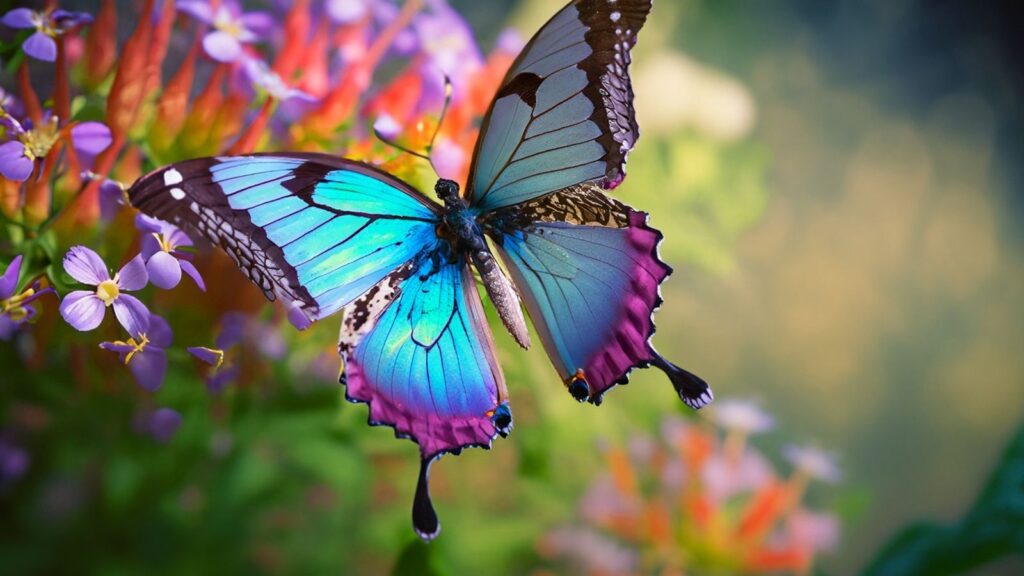Butterflies, with their vibrant wings and graceful flight, captivate the imagination like few other creatures. A deep dive into these delicate insects are not just for symbols of transformation but also play crucial roles in ecosystems worldwide and also help you discover your potential. From gardens to meadows, their presence brings a touch of magic to any landscape.
Beautiful:Vrzsz2uno_e= Butterfly
 Butterflies exhibit a diverse range of captivating colors and patterns across various species. Researchers have identified over 20,000 distinct species, each with unique characteristics and habitats. Monarch butterflies, for instance, are renowned for their striking orange and black wings, while the Blue Morpho showcases iridescent blue hues, this can help you master your finances the way you master species of butterflies for your assignment.
Butterflies exhibit a diverse range of captivating colors and patterns across various species. Researchers have identified over 20,000 distinct species, each with unique characteristics and habitats. Monarch butterflies, for instance, are renowned for their striking orange and black wings, while the Blue Morpho showcases iridescent blue hues, this can help you master your finances the way you master species of butterflies for your assignment.
These insects exhibit complex behaviors that contribute to their allure. Courtship rituals often involve intricate dances and pheromone release, enhancing their mating success. During migration, species like the Monarch undertake epic journeys, traveling thousands of miles, which demonstrate their resilience and navigational skills.
Butterflies play crucial ecological roles. As pollinators, they facilitate plant reproduction, aiding the growth of diverse flora. Their presence in ecosystems indicates environmental health, as they are sensitive to climate changes and habitat loss.
Conservation efforts aim to preserve butterfly habitats. Habitat restoration and protection initiatives focus on maintaining biodiversity, which supports these delicate creatures.
Characteristics Of A Beautiful Butterfly
A beautiful butterfly captivates with its intricate design and elegance. This segment examines the distinctive features that make butterflies exquisite.
Color Patterns And Symmetry
Butterflies display striking color patterns that can deter predators or attract mates. Bright hues result from tiny scales on their wings, which reflect light. Symmetry enhances their beauty and aids in camouflage. The Monarch’s vibrant orange and black contrast exemplifies such stunning patterns. The Blue Morpho’s iridescent blue shades reflect sunlight, creating a dazzling visual effect.
Wing Shapes And Sizes
Butterfly wing shapes vary significantly, influencing their flight and survival. Larger wings, like those of the Swallowtail, enable more effortless gliding and efficient flight. Smaller wings offer agility and speed, crucial for escaping threats. These shapes also affect basking behaviors, assisting in temperature regulation. In combination, size and shape contribute to a butterfly’s unique allure and adaptation possibilities.
Habitats Of Beautiful Butterflies
 Butterflies thrive in diverse environments, with their beauty often enhanced by the lush surroundings. Each habitat presents unique conditions, influencing the butterfly’s characteristics and behavior.
Butterflies thrive in diverse environments, with their beauty often enhanced by the lush surroundings. Each habitat presents unique conditions, influencing the butterfly’s characteristics and behavior.
Tropical rainforests house a vast array of butterfly species, benefiting from warm temperatures and abundant moisture. These environments provide a rich supply of nectar and host plants essential for butterfly larvae. The dense foliage offers protection and opportunities for camouflaged resting spots among vibrant flora. Iconic species like the Blue Morpho find refuge in these lush, biodiverse ecosystems.
Temperate meadows serve as ideal habitats for butterflies like the Painted Lady and Monarch during their lifecycle stages. With a variety of flowering plants, meadows supply ample nectar while their open spaces enable free-flight patterns crucial for mating or movement. Seasonal changes prompt butterflies to adapt, showcasing resilience as they navigate diverse meadow blooms.
Common Species Of Beautiful Butterflies
 These butterflies captivate with their vibrant colors and intricate patterns. Known for their remarkable beauty, many species stand out due to their unique features and widespread appeal.
These butterflies captivate with their vibrant colors and intricate patterns. Known for their remarkable beauty, many species stand out due to their unique features and widespread appeal.
Monarch butterflies, renowned for their orange and black wings, are iconic in North America. They exhibit one of nature’s longest migratory patterns, traveling thousands of miles from Canada to central Mexico each fall. Known for their dependency on milkweed during the larval stage, they play a crucial role in pollination. Conservation efforts focus on planting milkweed to support their migration and survival.
Swallowtail butterflies, with their striking tail-like extensions on hindwings, include over 550 species worldwide. Species like the Eastern Tiger Swallowtail display vivid yellow and black stripes, while the Pipevine Swallowtail boasts iridescent blue hues. Belonging to temperate and tropical regions, swallowtails frequent gardens and forests, contributing significantly to local pollination activities.
Beautiful Insects
The allure of butterflies extends far beyond their captivating colors and delicate wings. Their vital role in ecosystems as pollinators and indicators of environmental health underscores their significance. As they inspire conservation efforts and creative expressions, butterflies remind us of nature’s intricate beauty and resilience.
